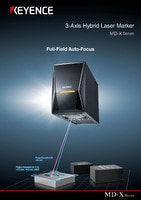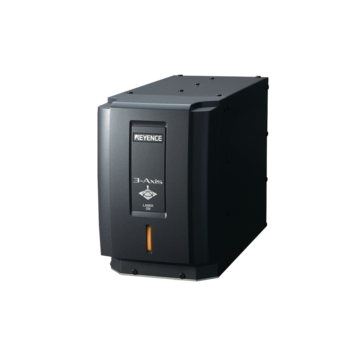Industrial Laser Marking Systems / Laser Markers
Laser Marking for Taps and Fittings
-
Tags:
- Laser Marking , Laser Etching , Laser Labeling
Regardless of the type of piping system used, taps and fittings are involved. Taps and fittings are helping hands for transporting liquids and gasses through pipes in industries like food & pharmaceuticals, medical devices, and plumbing. These piping parts are vital for preventing leakage and contamination.
Because of these important responsibilities, taps and fittings need frequent cleaning and reliable marks that won't be affected as these cleanings take place. For these needs, laser marking is the solution. In this blog, we will explore why laser marking bathroom taps, tri-clamps, and medical machines are the best solution when it comes to traceability, assembly and branding.
Why Choose Laser Marking for Taps and Fittings?
Taps and fittings are integral parts for keeping liquids and gasses hygienic as they travel through pipes. Because taps and fittings are the backbone of hygiene, it only makes sense that their marks should also follow suit.
Considering hygiene alone, laser marking is the cleanest because it is a no-contact marking method. However, laser marking for fittings and taps has more benefits, including permanency, precision, speed, and versatility.
Laser Part Marking is Leak-Proof
Laser marking fittings and laser marking bathroom taps only mark a surface and do not go into the substrate. The surface level marking prevents any leaks from occurring.
Laser Part Marking is Fast
Laser marking fittings and taps only take seconds to produce high-quality marks. This efficiency is exponentially faster than chemical etching, ink printing, or labeling. These processes require pre- and post-processing steps, while laser part marking does not.
Laser Part Marking is Precise
Lasers use a beam that is less than the width of a human hair to mark taps and fittings. The thin beam produces precise marks that are clear to read and fit on limited marking space.
Laser Part Marking is Permanent
Laser marking machines are highly regarded because of the marks’ permanency. The laser marks permanency is especially needed for taps and fittings because they are exposed to extreme temperature and humidity changes, friction, corrosion, and sanitation.
A laser mark withstands all of these exposures and does not require remarking, whereas alternative marking methods like ink printing and labeling are susceptible to rubbing off.
Laser Part Marking Produces Aesthetic Marks
Taps and fittings are frequently manufactured with steel or other dark metals. Laser marks are high contrast and readable even on dark surfaces and add to the aesthetics of the product.
Laser Part Marking has Material Versatility
Taps and fittings are manufactured from a range of materials, such as silicones and metals. Laser marking fittings and taps are consistently high contrast regardless of the type of material.
Laser Part Marking Improves Traceability, Assembly, and Branding
Traceability, assembly, and branding mark styles are all optimised through laser marking because of their readable, permanent, and high-contrast appearance. Lasers mark 2D codes, serial numbers, letters, and designs.
For assembly, these marks are instructional guidance for assembly consistency. Since fittings and taps are frequently disassembled, the marks are a consistent guideline.
For traceability, marks are connected to databases that store past manufacturing information. The mark helps trace defects and quickly recall parts.
Lastly, laser marking machines are used for branding; whether that be a design or text, laser marking brands a tap or fitting for identity or can add additional design components to increase the value of the product.
Discover more about this product.
Click here to book your demo.

Laser Marking Taps
Laser marking taps include etching and engraving; etching vaporises a thin layer of surface material in order to decrease its reflection of light to appear white where marked, whereas engraving produces indented marks. The etched or engraved marks are used for traceability and branding aesthetics.
We’re here to provide you with more details.
Reach out today!

Laser Marking Fittings
Laser marking fittings include etching, engraving, carbon migration, and cleaning. Fittings are assembled and reassembled more often than taps because they’re part of an internal piping system, so aesthetics are less important.
Curious about our pricing?
Click here to find out more.

Industries that Benefit from Laser Marking Taps and Fittings
Laser marking fittings and taps benefit any industry that uses pipes: food & pharmaceuticals, oil & gas, medical devices, plumbing, automotive, construction, and more. In this blog, we’ll highlight the plumbing, food & pharmaceutical, and medical device industries because of their need for precision, permanency, and delicacy of a laser marking machine.
Laser Marking in the Plumbing Industry
Using Laser marking on bathroom taps is a popular choice for businesses branding faucets because of their longevity and aesthetics. Bathroom taps are smooth and chrome-coloured parts that sustain years of contamination and exposure to liquid. These parts last decades, so the marks have to as well.
Laser Marking in the Food and Pharmaceutical Industry
Tri-clamp fittings in the food and pharmaceutical industry secure pipe connections, drastically minimising the risk of contamination from bacteria, leaks, and wear.
Laser Marking Fittings and Taps in the Medical Device Industry
Laser marking machines excel at adding traceability marks to fittings and taps for oxygen, dialysis, and nitrous oxide machines.
Since medical devices have life-threatening consequences if they fail, the medical device industry has one of the strictest traceability standards. Each medical device requires a unique device indicator (UDI), a 2D code readable by humans and/or machines, that stores supply chain information. The information is also uploaded onto a national database called the Global Unique Device Identification Database (GUDID).
A laser's precision, permanency, and gentle nature are ideal for marking a UDI on fittings and taps in the medical device industry. As a result, fittings and taps are adequately tracked for inventory and recall purposes.
We’re here to provide you with more details.
Reach out today!

What Laser System Should be Used for Taps and Fittings?
Taps and fittings are manufactured in various shapes, sizes, and materials. Regardless, taps and fittings usually have curves and limited marking space. Laser markers conventionally have a fixed focal point, meaning any curves or non "flat" geometries pose marking challenges. This is no longer a concern with our 3-axis control lasers that maneuver around curves instead of marking on a single plane. These laser marking machines also feature auto-positioning and auto-focus for ease of use.
As for material, metal taps and fittings are most compatible with fibre or hybrid lasers. These systems have a high output for producing light, dark or engraved marks on metals. Both fibre and hybrid lasers etch, engrave, clean, and conduct carbon migration.
Alternatively, plastic taps and fittings are more compatible with a UV laser marking machine. UV lasers use a process called “cold marking,” which does not add heat stress to your plastic. These laser marking machines etch and engrave.
Discover more about this product.
Click here to book your demo.

Ready to Implement a Laser System for Taps and Fittings?
As you can see, taps and fittings are a necessary part of any piping system, so they must be tracked, assembled, cleaned, and permanently branded. Laser marking fittings and taps is a marking solution that withstands contaminants, environments, and transportation.
Without a laser marking machine, you’ll be marking and remarking throughout the lifespan of your taps and fittings. Mark just once with a laser marking machine—contact KEYENCE today to learn more.
We’re here to provide you with more details.
Reach out today!





